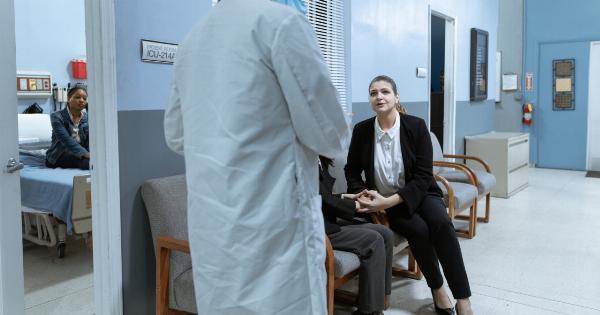The healthcare industry is supposed to be the foundation of safety and recovery. However, it’s also the platform where thousands of medical mistakes happen every year.
Medical errors can range from diagnosis and treatment problems to complications during medical procedures. According to statistics, medical mistakes contribute to over 250,000 deaths per year in the United States alone, making it the third leading cause of death after heart disease and cancer.
The following are some major medical mistakes that occur too often.
1. Misdiagnosis
Misdiagnosis is among the most common medical errors that lead to severe harm to patients. A misdiagnosis happens when a doctor fails to recognize the correct ailment, making them give the wrong treatment.
The wrong medical treatment can cause substantial medical harm such as organ failure, disability, or death. Misdiagnosis could happen from failure to recognize symptoms, improper testing, incorrect interpretation of lab results, and inadequate medical history review.
Doctors should always run tests before determining the illness and ensure that the results match the patient’s symptoms and medical history.
2. Surgical Errors
Surgical mistakes are another prevalent type of medical error. They occur when a surgeon makes an error during a surgical procedure, leading to serious harm or death of the patient.
Surgical mistakes could result from a lack of concentration or carelessness during the procedure or issues with the equipment used. Surgical mistakes can range from foreign objects left in the body to the wrong organ removed. These mistakes can have severe consequences such as excessive bleeding, infection, and even death.
Every surgeon should always take necessary measures before, during, and after surgery.
3. Medication Errors
Medication mistakes occur when a doctor prescribes a wrong medication or the wrong dosage. In some cases, medication mistakes arise from misinterpretation of the prescription or the pharmacist’s error.
Medication errors could have devastating consequences, including drug overdose, allergic reactions, or organ damage. Patients are advised to advise their doctor of any allergies or reactions to medication, and health care providers must be mindful of allergies and drug interactions.
4. Discharge Instructions
Discharge aftercare instructions inform patients about how to take care of themselves after leaving the hospital. Discharge instructions are critical in ensuring that the patient fully recovers and avoids complications and readmissions to the hospital.
However, carelessness by healthcare providers could lead to patients getting aftercare instructions that do not match their medical condition. Patients might not feel comfortable asking for clarification, leading to inadequate medical care once they get home. Health care providers need to be precise and provide written instructions to help patients understand how to take care of themselves.
5. Infection Control
Infections can be easily spread within hospitals, and patients are susceptible to contracting an infection when they are not well. Medical staff needs to practice proper hygiene to avoid spreading harmful infections among the patients.
Staff should wash their hands before and after seeing patients, sanitize their equipment, and ensure that disposable equipment is properly disposed of. Failure to do so encourages the spread of infections like pneumonia, methicillin-resistant Staphylococcus aureus (MRSA), and other diseases that could severely harm patients.
6. Birth Injuries
Birth-related injuries can be incredibly difficult for parents to cope with, especially if it resulted from the medical team’s mistakes.
These mistakes include failure to monitor the baby’s heart rate, failure to recognize distress during labor, and misuse of medical equipment resulting in fetal distress. These mistakes could lead to permanent damage to the child or severe injuries to the mother. Health care providers must be trained to identify the warning signs in the mother and child and take necessary action to prevent harm.
7. Communication Error
Communication errors between medical staff could lead to medical errors. Every member of the healthcare team should understand the patient’s condition and communicate important information.
Errors in communication usually lead to patients receiving the wrong treatment or diagnosis. Health care providers should regularly update their patient’s medical records and ensure that they understand the care plans.
Communication among medical staff could affect the patient’s outcome, making it necessary for them to coordinate and work together for the patient’s best interest.
8. Equipment Malfunction
Faulty or inadequate equipment could result in medical mistakes that lead to injuries to patients. In some cases, equipment failure leads to serious problems that could be avoided by proper maintenance and adequate equipment testing.
Health care providers conducting medical procedures should ensure that their equipment works correctly and reported any equipment malfunction.
9. Lack of Experience
Lack of experience or inadequate knowledge and training in medical facilities could lead to medical errors. This most commonly happens with new medical practitioners and could lead to severe harm to patients.
Medical professionals must have continuous training and upskilling to improve their knowledge and skills in the ever-changing medical field.
10. Informed Consent
Patient’s informed consent is essential before performing any medical procedure or treatment. The informed consent ensures that the patient understands what the procedure entails, the benefits, and potential risks involved.
Medical practitioners should ensure that their patients understand the consequences of their decisions and give them adequate information before getting the patient’s consent.
Final Thoughts
Medical mistakes could happen at any point in a medical practitioner’s career. Patients have a right to receive adequate medical care and should hold healthcare providers accountable for mistakes.
Every medical facility should have strict policies and procedures to avoid medical errors. They should ensure that employees are regularly trained, provide proper equipment maintenance, and establish open communication among the entire healthcare team.
Healthcare providers must provide a transparent, ethical, and responsible environment for their patients.






























